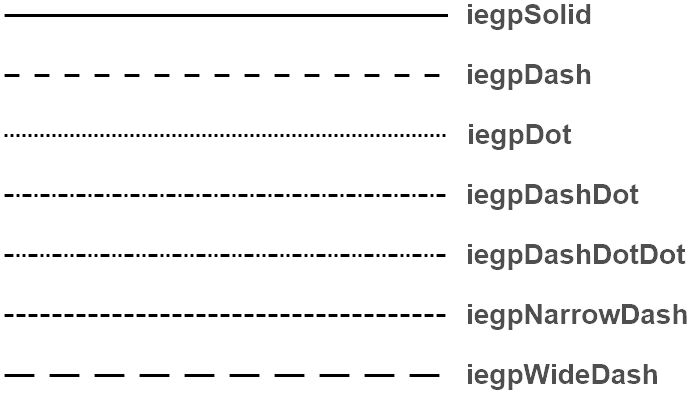TIECanvas.DrawLines
Declaration
procedure DrawLines(Lines: TList; LineColor: TColor = clNone; LineWidth: Integer = -1; LineStyle: TIEGPPenStyle = iegpSolid); overload;procedure DrawLines(Lines: TIEVisionVectorScalarInt32; LineColor: TColor = clNone; LineWidth: Integer = -1; LineStyle: TIEGPPenStyle = iegpSolid); overload;
Description
Draw a list of lines to the canvas.Lines can be one of:
◼A TList of TRects where line is drawn from Top-Left to Bottom-Right
◼A TIEVisionVectorScalarInt32 object, e.g. from IEVision methods like detectLines and houghLinesP
You can optionally specify a line color, width and style (if you have not already specified these using Pen).

Examples
lines := ImageEnView1.IEBitmap.GetIEVisionImage().detectLines( ievLSDDetector );ImageEnView1.IEBitmap.IECanvas.DrawLines( lines, clRed, 2 );
ImageEnView1.Proc.TextOut( Align_Text_Near_Left, Align_Text_Near_Top, Format( 'Lines: %d', [ lines.size ]), 'Arial', 12, Text_Color, [fsBold] );
ImageEnView1.Update();

// Draw a multiple diagonal lines
var
lines: TList;
r: PRect;
i: Integer;
begin
lines := TList.Create;
for i := 1 to 4 do
begin
new( r );
r^.Left := 100;
r^.Top := i * 50;
r^.Right := 200;
r^.Bottom := i * 50 + 100;
lines.Add( r );
end;
ImageEnView1.IEBitmap.IECanvas.DrawLines( lines, clRed, 2 );
ImageEnView1.Update();
for i := 0 to lines.Count - 1 do
dispose( PRect( lines[i] ));
lines.free();
end;